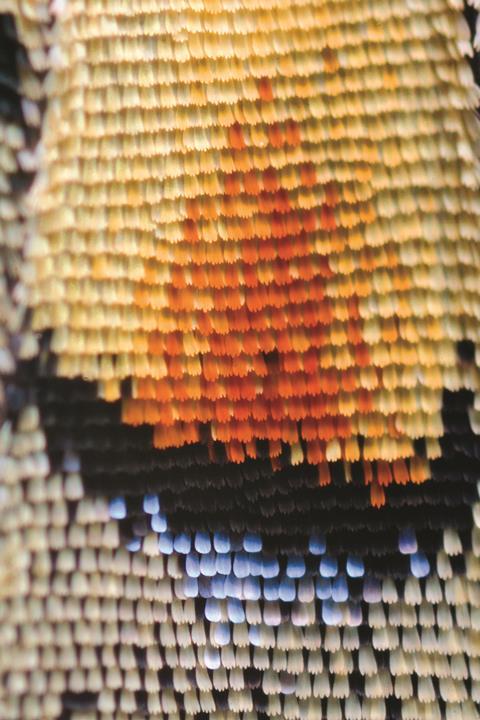Stephen Ashworth explains how a range of different colours can be achieved through dyeing, with tests you can try at home, in this article from the ‘Avogadro’s lab’ series

A substance that reflects all wavelengths of visible light appears white, whereas a substance that absorbs all of those wavelengths appears black. To appear coloured, a substance must fully reflect or transmit only some of the wavelengths of light falling on it. This can be done using a structure, as in the case of DVDs and the Morpho butterfly, or by using molecules that absorb some wavelengths more than others.
Such molecules fall into two broad groups: dyes and pigments. Pigments are generally insoluble in water and have to be embedded in a mixture, known as a binder, which can then be used as a paint. A simple brown paint can be made by mixing earth or cocoa powder, as the pigment, with egg yolk, as the binder.
Dyes on the other hand are generally water-soluble. This means that an item, such as a piece of clothing, may be dipped in a solution of dye and coated uniformly. Unfortunately, if the dye is soluble in water it also means that the dye will tend to be rinsed out every time the clothing is washed or otherwise exposed to water.
Staying colourful
To prevent dyes washing out of fabrics, they are linked as strongly as possible with the fabric: the dye is then said to be fast. One approach is to incorporate the colour into the fibre itself. This can be done with polyesters. Here the dye is more or less dissolved in the fibres. Another approach is to form a bond between the dye and the fibre. Sometimes this can be done directly, but in most cases another compound, known as a mordant, is used.
A mordant reacts with a dye and the resulting complex binds to fibres in the cloth. This is a chemical reaction that tends to change the colour of the dye. The same dye might therefore show different shades if used with different mordants. Examples of mordants include alum, tannic acid, sodium chloride and even urine. Of course, the mordant has to be matched to the dye and the fibre being dyed. Some dyes, however, do not require mordants to make them fast. These include tea and pomegranate juice.
Try it yourself
There are a number of experiments that you can be carry out using natural dyes and some clean samples of either cotton or wool. First, extract some dye, which could be beetroot juice, tea or some other highly coloured substance. Then dye samples of cloth by soaking them in the chosen dye and let them dry. If you have different samples of cloth, the dye may be taken up differently and give different shades.
The fastness of the dye can also be tested. To do this cut a piece from the dyed cloth. Save this piece as a comparison. Wash the rest of the dyed cloth and let it dry. Wash the cloth several times, but each time cut a piece off and save it. The series of pieces will show how quickly the colour of the sample fades as it is repeatedly washed. This can be repeated using different mordants such as alum or sodium chloride (see More on mordants). Soak the cloth in mordant solution before or after dyeing, or even add mordant to the dye solution. These alternatives provide a wide range of different experiments.
Find out more
Wild Colours provides further information about mordants and where to obtain them.
Additional information
This article originally appeared in The Mole, the student magazine published by the Royal Society of Chemistry from 2012 to 2015.






No comments yet